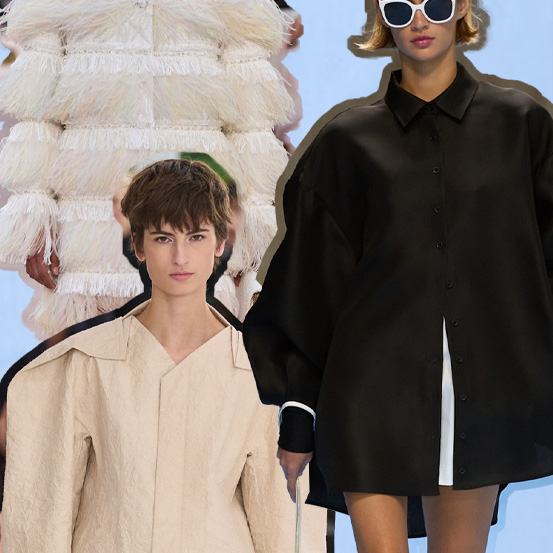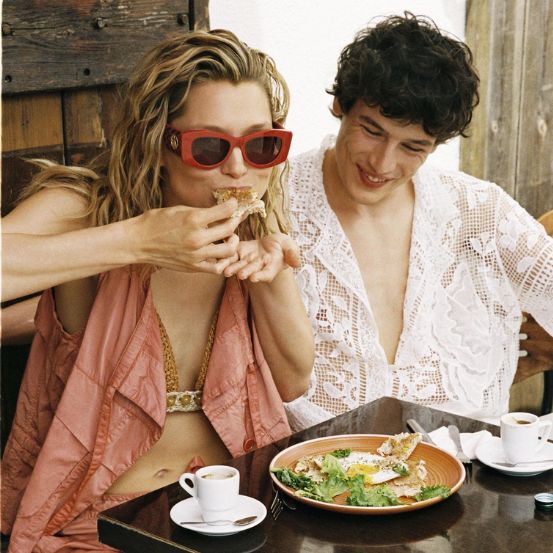The Blossom Issue
They’ve always said, “teach them young”, but could it be that like Icarus, we flew too close to the sun and ended up burnt?
Ironically, while the beauty industry has spent years educating, teaching, developing products, and seeking for people to better understand skincare, beauty, and how to use it, as an industry, we completely oversaw a factor or population that might as well have become our latest scandal: kids. We spent years educating teenagers and young adults on the needs of one’s skin: to protect, to hydrate, to cleanse, amongst others; and we never held back when it came to scolding older consumers for their errors of the past (because in what mind was it ok to tan with oil or exfoliate daily?). Perhaps, at some point, we did ask ourselves, “when is it too early to start wearing makeup?”, but in most cases, the question didn’t go past a thought as it was hilarious to see toddlers and preschoolers playing dress up with their mom’s lipstick and glitters. Some would say, strike one.
Given all this and nonetheless the carefreeness of our seemingly innocent dress-up dates, recent matters have proven that perhaps we should’ve asked a more poignant question when it came to our kids and that, in fact, we might be dealing with a bit of an issue in our hands. An issue that has kids currently buying active ingredients, hoarding the sales of major beauty retailers worldwide, and subjecting themselves to routines that are meant for skins way more mature than their own. Some would argue, this is strike two. While most retailers have come out now and are actively trying to distance themselves from the controversy around kids and their most recent investments, the issue itself encompasses the case where pre-teens and kids have been spotted shopping at various beauty meccas and registering hauls that are worth more than a couple of months' allowance and hoarding products that are more suited for their elder siblings (or perhaps even parents) than they are suited for themselves. Now, why are children feeling the need to purchase actives, deep treatments, or high-delivery products when their skin is, well, still that of a child?
American author Robert Fulghum, known for his work surrounding children's learning and development, once said, “don’t worry that children are never listening to you, worry that they are always watching you.” Taking this as our thesis, while we never intended to direct the intense messages of caring for one’s skin to anyone under the age of puberty, society’s hyperfixation with beauty, in turn, created a place where youngsters that still find the opposite gender gross were exposed to elderly figures who every day and every night, in a ritualistic manner, cleansed their face, applied serums and creams, slugged and exfoliated, and oiled and massaged all under the excuse “to take care of one’s skin” and “have the best skin possible.” The truth is, how could one blame children for actually wanting to be a part of this and also secure for themselves the apparent fountain of youth, beauty, and happiness? Like every legend, the story has two sides — the fairytale and the nightmare, both the same story, but with slightly different undertones of intonation. On one hand, let's focus on the negative — how society’s expectations and high standards of beauty have twisted the pure perception of reality. This extends to a point where a mere infant, a child whose only task is to laugh and grow, feels burdened by the need to expose themselves to treatments that are far beyond their skin’s needs. A child who is already concerned about problems that are yet to come because, most likely, skin that hasn’t gone through puberty is not even capable of suffering from acne or other affections, yet they feel the emotional need to treat these phantom issues.
In this case, sure, blame it on the parents, throw the brands under the bus, put it on the media, or pin it on the retailers — they’re the ones that aren’t controlling their spawns, the ones creating products that look like play-dough jars, the ones creating attractive ads and “relatable” campaigns, and the ones selling to anyone under the age of 18. This being said, for a child to successfully be able to haul an entire routine of actives and exfoliants, there had to be many moving parts that allowed for the series of fortunate (or unfortunate) events to occur — a lot of open doors, accessible resources, attainable products, and most likely some alluring advertising in the middle. Now, blame is easy to place. Blame will always be easy to place. We’ve established at this point that some will blame the parents, others the brands, some will argue for the media itself, and some will expect the retailers to take extreme censoring methods. Some will even go far enough to blame the kids, as they’re “selling out the most hyped products,” and “messing up the stores, counters, and displays.” But at the end of the day, more than just kids who currently have a misguided sense of need and access to way too much unsupervised spending cash, are we perhaps overseeing the one positive thing from this whole ordeal? We live in the ultimate era of education. Knowledge and access to different levels of learning and growth have never been as easily accessible as they are today. Sure, one could argue that, in itself, is an issue, but down the line, education is a double-edged sword and, for those who know how to wield it, it can be the best tool in life.
Kids nowadays are more versed in different matters than ever before. Call them Jacks of all Trades or just curious young minds that have the power to reach into their pockets or screens and pull from there the knowledge of virtually anything they wish for. Of course, it might be annoying to have to fight down with a ten-year-old for the last trending product from the gondola, and it is concerning that youngsters are asking for retinols and strong chemical peels when their skin barely has any sign of growth, little less aging. But on the flip side, the fairytale, if you may, is that these are kids who have within them knowledge that today some adults are just barely grasping for. At the risk of reaching, compare it to the way kids today are looking at different gender identities or sexual orientations. It’s a popular comment to joke on how it seems like children today just come with an inclusivity chip part of their brains, that they come already understanding, accepting, and including. Twist that into beauty, into skincare; what took us adults years to understand and to master is something that is already half-ingrained in the new generation’s mind. Of course, like all learning, it takes a bit of adjustments. Today, their rampant minds and over-excited selves are jumping onto any trend they find, wanting and desiring to try any new product that launches and seeing as validating being part of the crowd that is “in” with the latest in beauty and its innovations.
This is the other hand, this is the positive. The precocious, raw, pure excitement that had us reading up until way past bedtime on whatever matter we were hyper fixating on at the time of our adolescence is the same kind of energy that is currently coursing through those kids' bodies. The desire to understand everything, to have it all, to know every single detail — the only difference is that we were hung up on reality TV, The Hunger Games, and Harry Potter; one could argue that being hung up on skincare is a bit more of a useful skill down the line. Sure, kids shouldn’t be using actives or retinoids before their due time for that — but just blaming children, their parents, and stores for this situation is no different than expecting plastic surgery clinics to be shamed for applying botox or fillers on those under the age of 35. It’s all relative and it comes down to desire, knowledge, and, most importantly, personal preference. Someone once said, “Perhaps Icarus wanted to fall into the ocean, perhaps he wanted to reach the sun.” It’s easy to judge, argue, and most likely find arguments as to why children shouldn’t be playing with skincare at a young age, but contrary to heaven and hell, life is shades of gray, and in this particular case, the real wrong lies within the lack of supervision yet not the interest from the youngling party.
Instead of complaining about youngsters getting into the beauty game far too early for their time, perhaps it’s the ideal chance to educate them, normalize their perception of what real skin looks like, what an age-appropriate routine is, and how to learn to grow in their skin, even if that means aging while doing it. This, in turn, will avoid them taking over the products that us adults actually need and unnecessarily exposing themselves to products too harsh for their young complexions. At the end of the day, while blooming too early might be damaging for the plant, the flower, and their life cycle, to bloom there must be a series of environmental factors that allow for that to happen. While it could be stress or changes in weather, it could also be nutrient availability and evolutionary adaptations. Perhaps, without knowing, we’ve nurtured our kids into an early bloom, and they’ve adapted a tiny bit too well, but alas, it doesn’t mean we can’t harness it and create the next generation of skincare connoisseurs — even if we might have to hide the retinoids from them for a decade or so more.
Translated from the original in The Blossom Issue, from march 2024. Full credits and stories in the print issue.
Relacionados

.png)
Da MAC para o Mundo: tudo o que importa saber sobre as tendências de maquilhagem atuais
09 Apr 2025
.jpg)
.jpg)





.jpg)